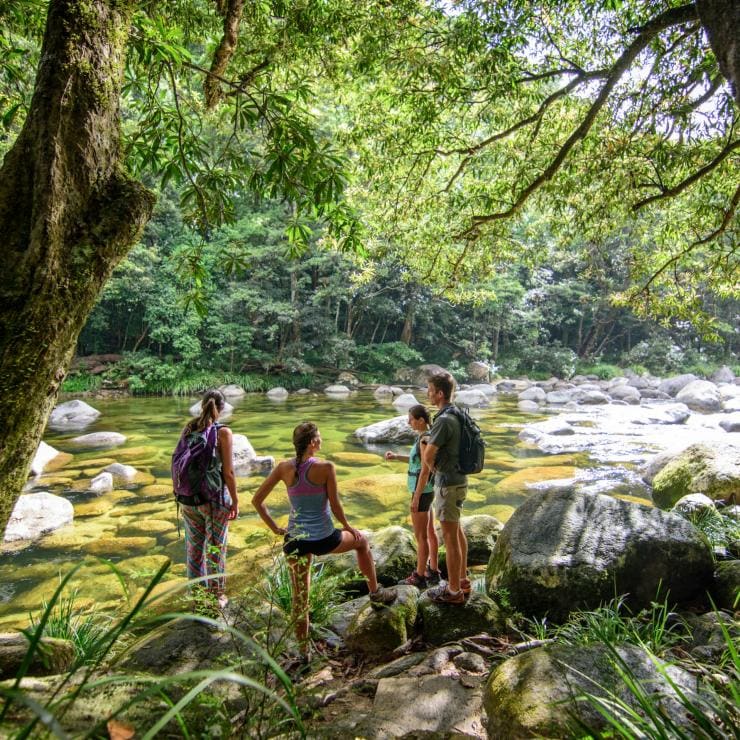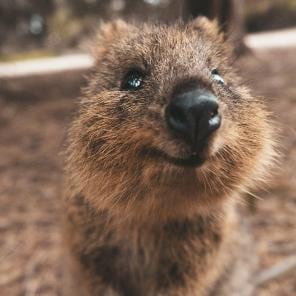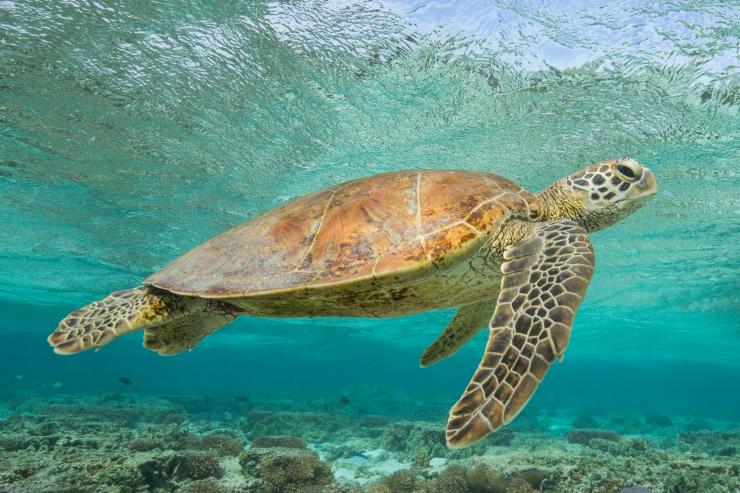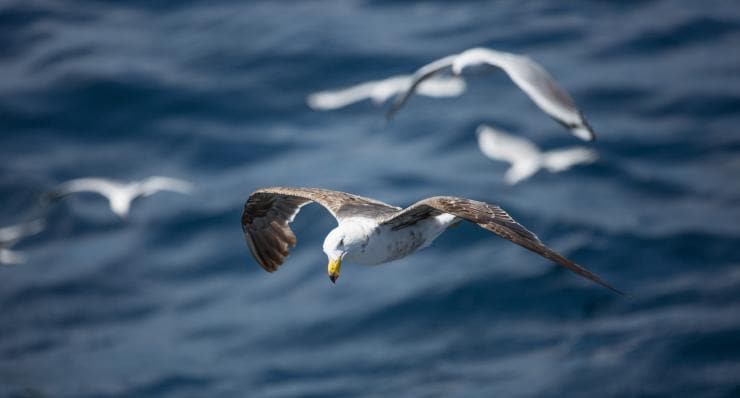
Seal Bay Conservation Park, Kangaroo Island, South Australia © Exceptional Kangaroo Island
How to experience Australia’s wildlife responsibly
Here in Australia we’re all about being kind to our neighbours – and that includes our furry friends. Here’s how you (and our animals) can have the best experience together.
By Carolyn Beasley
That moment you first see a kangaroo bounding across the plains, or glimpse a wombat waddling through the forest, is one you’ll never forget.
Spotting Australia’s iconic animals in the wild is often a holiday highlight. By keeping your safety and the welfare of the animals in the front of your mind, you’ll be rewarded with an authentic wildlife experience; glancing into the lives of Australia’s unique creatures.
Here are some simple pointers to help ensure your wildlife encounters are rewarding and positive – for both you and our animals.
1. Choose responsible tourism

FNQ Nature Tours, Mossman River, Daintree National Park, Queensland © FNQ Nature Tours
While it’s possible to spot some animals in the wild independently, it’s a good idea to join a reputable tour or hire a private guide. You’ll maximise your chances of finding the more secretive animals such as the platypus, and those with specialised habitats, like koalas.
A knowledgeable guide will ensure you’re learning along the way, giving you a richer experience and helping you spread the message of wildlife conservation back home. Also, wildlife guides know what’s best for the animals and understand the local laws governing safe interactions.
A great place to start looking for ethical tour operators is Australian Wildlife Journeys. This organisation is a collective of some of Australia’s signature wildlife experiences across the country, showcasing iconic wildlife and high-quality interpretive information.
If you’d prefer to visit a zoo in one of our cities or regional areas, Australia offers many responsible experiences where high standards for animal welfare are upheld.
2. Give the animals space

Seal Bay Conservation Park, Kangaroo Island, South Australia © South Australian Tourism Commission
Just like humans, animals need their personal space. When watching animals and birds in the wild, it’s tempting to creep closer for a better look or that perfect snap. But without us realising, we can disturb them and cause the animals to relocate, and they may be too afraid to come back to their favourite safe feeding spot. If animals feel forced to flee, they may also use up valuable energy needed to escape predators and source food.
To check if you’re too close, take cues from the wildlife. If the animal has stopped behaving as it was before, consider backing away. When it resumes its previous behaviour, it’s no longer worried about you – or your camera – so snap away as much as you please.
3. Resist the urge to touch

Quokka, Rottnest Island, Western Australia © Allan Dixon
In some parts of Australia certain animals such wild wombats, kangaroos and Rottnest Island’s adorable quokkas, are inquisitive and friendly towards people, which often means they’ll come to you.
It can be tempting for us to touch them, but there are a couple of reasons why we need to resist. While animals look cuddly, they’re still wild and sometimes they can become frightened, and occasionally this may cause them to scratch you – or worse. We also risk spreading diseases from us to the animals without realising, so preventing contact is vital.

It’s still possible to snap that perfect quokka or wombat photo for your feed without touching them, just by giving the creatures a little more space.
Read next
How to have a low-impact holiday on the Great Barrier Reef
If you’re swimming with marine animals such as sea turtles, whale sharks and wild dolphins, it’s vital to avoid touching them. This prevents damaging their protective skin layer, and avoids scaring off the animals, which your fellow travellers will be grateful for.
4. Take care around wildlife babies

Kangaroos, Anglesea Golf Course, Anglesea, Victoria © Visit Victoria
While there’s nothing quite as adorable as seeing baby wildlife, it’s important to be mindful during these encounters. Just like all new parents, animals and birds are sensitive about taking care of their babies. If parent animals become frightened, there’s a chance they may become aggressive towards people. Some animals might even abandon their young if stressed, and birds can fly away from their chicks, leaving them vulnerable. It’s safest for the animals and for us to give them extra space when their babies are around.
Animals that you may see with their babies include kangaroos with joeys in their pouches, koalas with babies riding piggy-back, and humpback whales nudging newborn calves back to Antarctica. And yes, they are all just as cute as they sound.
5. Preserve wildlife habitat

Koala, Magnetic Island, Queensland © Tourism and Events Queensland
As wild animals rely on their habitat for food and shelter, they need the environment to remain just as it is, and there’s a few ways you can help.
While you’re out walking, keep to defined walking tracks and viewing areas and you can help prevent trampling on important vegetation and causing erosion.

Trees, wildflowers, corals and even shells are all-important for animals, and are best left where you find them.
But what you can pick up is rubbish; removing all waste from the natural areas we visit will ensure animals don’t suffer from accidentally eating the wrong thing.
If you want to help further, you can also choose to volunteer your time to help wildlife experts protect wildlife habitats around the country.
6. Allow animals to find their own food

Peacock and a duck, Cataract Gorge, Launceston, Tasmania © Tourism Australia
The Australian bush provides natural food for our wildlife, and it’s important for animals to find their own meals. Over thousands of years, animals have evolved to eat their natural diet, and although they may gobble human food if they get the chance, it can make them very sick. If animals and birds associate humans with food, they can also occasionally become aggressive, and certain birds, like seagulls, can displace other birds.
Many people have innocently fed ducks and swans, but for a better appreciation of these waterbirds and other wildlife, join a tour with experts to see them in their full, natural glory.
7. Drive safely

Emus, Ikara-Flinders Ranges National Park, South Australia © South Australian Tourism Commission
Self-drive holidays through the wide Australian countryside are a delight, but it’s important to take care when driving outside cities to avoid wildlife on the road. Animals such as kangaroos, wombats and koalas are most active at dawn and dusk, and have been known to wander onto roads.
Be careful if you find an injured animal or bird, as they might feel threatened. It’s best to call one of the various wildlife rescue organisations that operate throughout Australia such as New South Wales’ volunteers at WIRES (phone 1300 094 737), who can offer advice.
Of course, if self-driving is not your thing, there are many guided wildlife trips you can choose from.
8. Be kind to nocturnal animals

Brush-tailed possum, Boutique Wildlife Tours, Southern Highlands, New South Wales © Boutique Wildlife Tours
Nocturnal wildlife such as possums and owls have big eyes that are sensitive to light. If you’re looking for night-time animal encounters, consider using a flashlight with a red filter, which is less disturbing. Photography with a flash can hurt the animal’s eyes too, so avoid it wherever possible.
In wild coastal places, lighting from hotels can disorient animals, like migratory seabirds and sea turtle hatchlings. It’s a good idea to switch off any lights when they’re not needed, and draw the curtains when you turn them on.
Nocturnal species can be secretive too, so to give yourself a greater chance of finding animals at night, enlist the expertise of a local guide.


































































































































